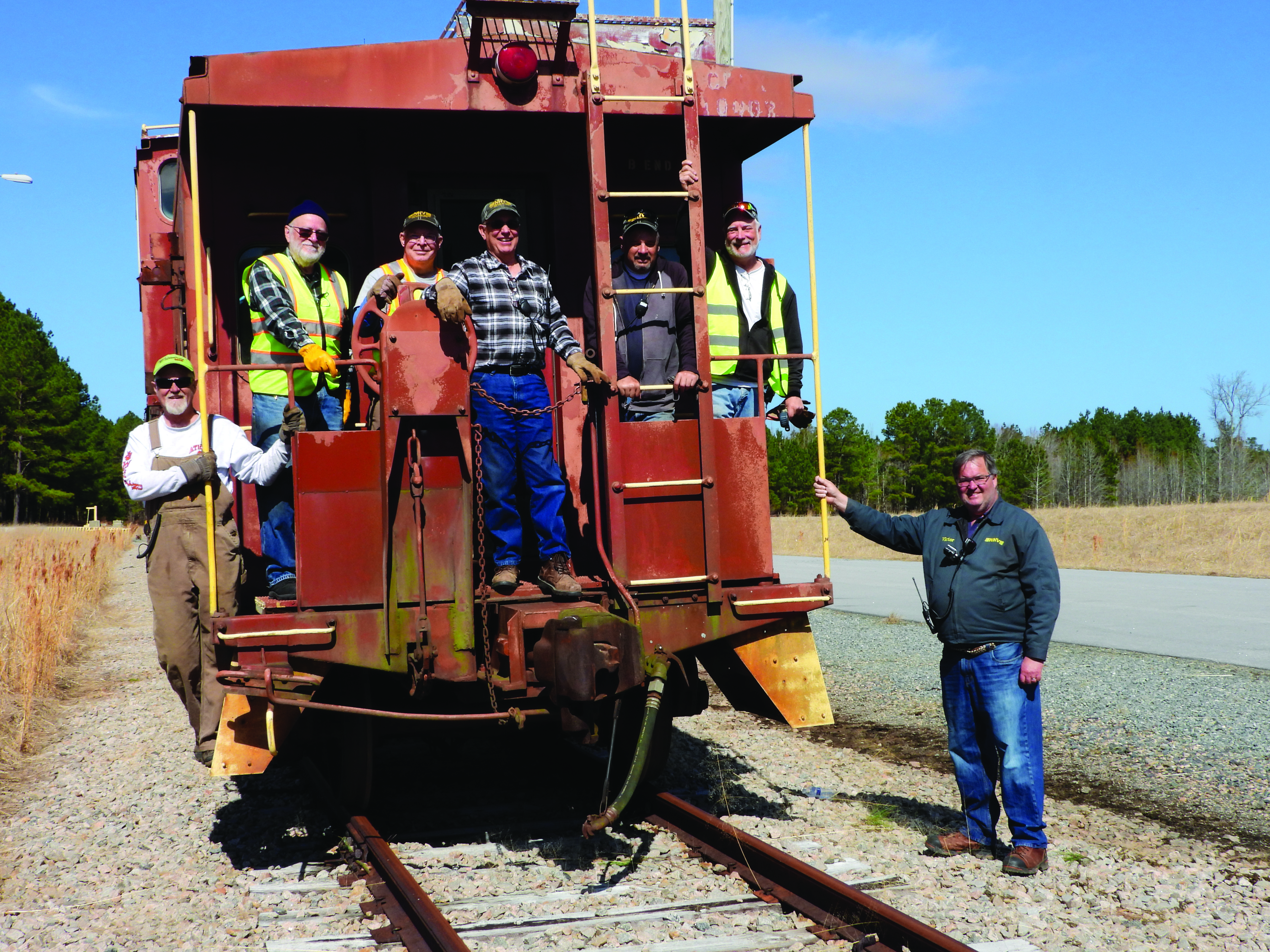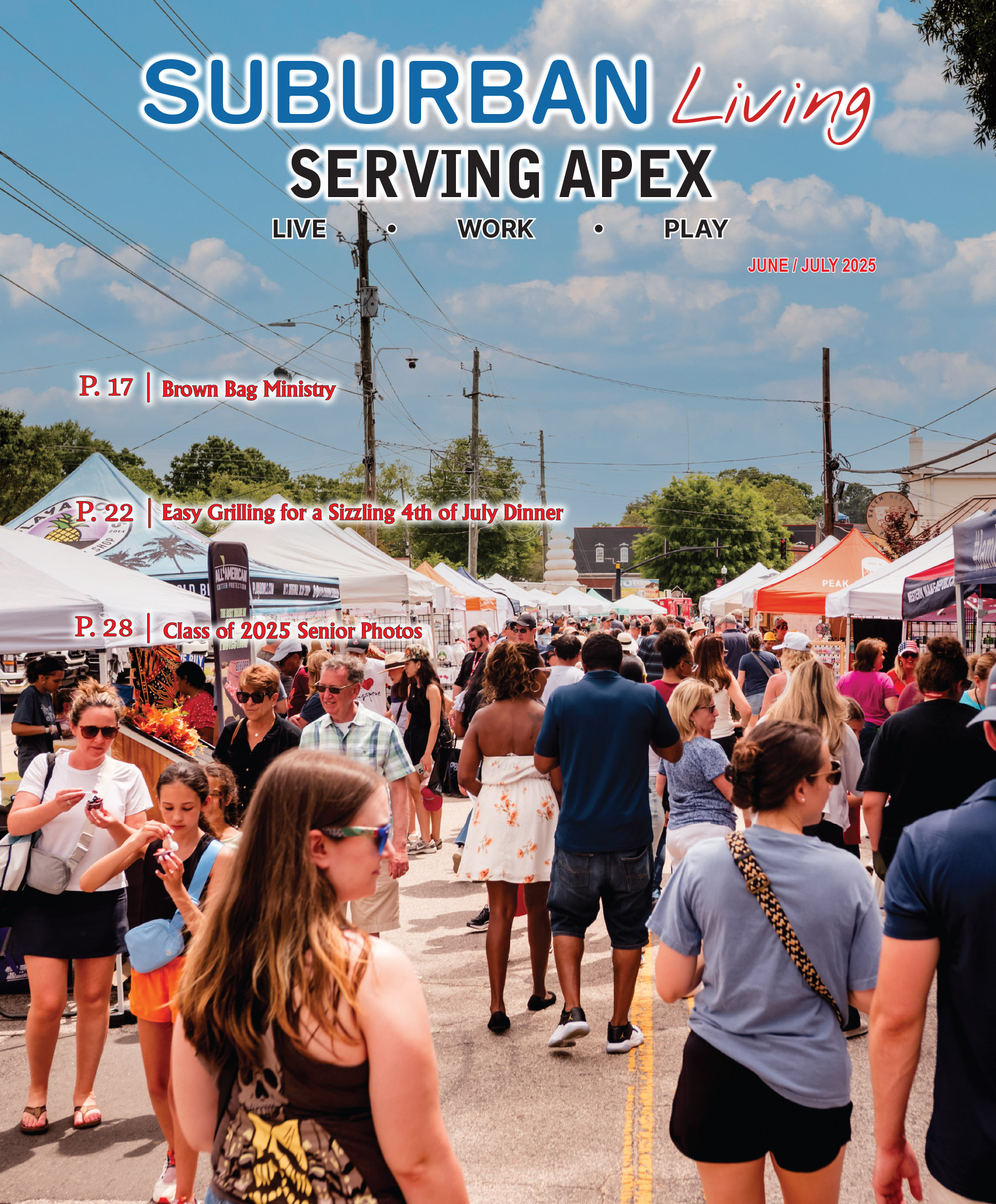Just 5 miles from the North Carolina Railway Museum (NCRM)—an open-air facility in nearby New Hill that includes a collection of historic railroad equipment and offers public excursions on the New Hope Valley Railway (NHVR)—is a hauntingly beautiful sight. Ten weathered railcars, some dating back more than a hundred years, rest at a disconnected railway siding on the property of Duke Energy’s Harris Nuclear Plant. Undisturbed in the plant’s secure confines for over 20 years, the cars occupy the peaceful space among towering pines and open fields—and are a testament that the once mighty vehicles of America’s railroading past still endure.
Four of the cars were acquired in the 1990s by the NCRM, which had planned to move them to its location between New Hill and Bonsal. But after the events of 9/11, Duke Energy’s Harris Nuclear Plant implemented tighter security measures and the NCRM was unable to access the cars.
In the fall of 2019, CSX, a leading supplier of rail-based freight transportation in North America, disconnected the Harris power plant’s railway siding located opposite NCRM’s property. With approval from Duke Energy, the NCRM team was then able to visit its four cars—two Pullman-built passenger cars, a baggage car, and a boxcar—and also discover six Duke Energy-owned cars on site: two cabooses and four flat cars that had been used in the 1990s and 2000s on trains that served power plants in the Carolinas. Duke Energy offered the six cars as a donation to the NCRM if it could remove them from the property; otherwise, they would be destined for the scrap yard.
Just as both parties began discussions to relocate the cars, COVID-19 swept the country. Nearly all of NHVR’s rides were canceled during its 2020 operating season; the few that did operate were limited to 30 percent capacity to reduce the spread of the virus, which significantly decreased ticket sale revenue. “COVID-19 devastated our museum’s savings, and everything came to a grinding halt for our operations and for our discussions,” said Victor Varney, NCRM volunteer and project manager for Save the Ten.
Save the Ten Launches
Undeterred in their quest to bring the historic railcars to their property, the NCRM board in January 2021 started Save the Ten, a campaign to raise $100,000 as the estimated moving costs for each car was $10,000; the costs have since increased. The effort to move all 10 is herculean: Six cars will be hoisted by crane onto a flatbed and transported on public roads to the rail yard where another crane will lift the cars from the truck to a set of tracks at the NCRM. The other four cars, which are longer and won’t fit on a flatbed, will need to be lifted by crane onto road-going rubber tire dollies, and similarly moved over public roads to where they will be unloaded by cranes onto tracks at the NCRM.
“It took a lot of work, but we raised $140,000 during 2021 from our members and the community. We got a couple of grants from different organizations, including CSX and the National Railway Historical Society. We also had great support from the North Carolina legislature that included a $50,000 grant in the state budget that was signed by the governor in November 2021,” Varney said. “The total funds raised now are a little over $190,000, which makes all the difference in the world to be able to complete this project.” Varney noted that the contract with Duke Energy to move the cars was finalized in December 2021, and plans are underway for NCRM to begin the process to move all 10 railroad cars in April or May.
Pieces of the Past
The 10 railcars are impressive, and each has a story that dates back decades. The four cars owned by NCRM are in weathered condition but restorable:
Ex-Pullman baggage/rail post office (RPO) car: This was built in 1913 originally for the Denver & Rio Grande Western Railroad. It was later acquired by the “old” Norfolk Southern Railway (that ran between Norfolk and Charlotte) and converted to a “camp car” for maintenance crews to use to eat and sleep. Inside are bunk beds, seating, a kitchen and restroom. “Being the oldest, it has suffered some damage, leaks in the roof and broken windows, but it can be restored and be a real history lesson for folks,” Varney said.
Historic ex-Pullman sleeper: Originally called the Calais but later re-named the Alexandria, it was built in 1916. In 1947, it was acquired by the Seaboard Air Line Railroad and converted into a foreman/cook car for use on maintenance trains. Much later, one end was altered to look like an observation car.
Atlantic Coast Line Baggage-Express car: Made of stainless steel, it was used for carrying luggage, baggage and mail. The inside is wide open and ideal for eventual use as a stationary display space at the NCRM. Although its integrity is very high, it will need cosmetic restoration.
Hi-Cube Tall Boxcar: This is believed to be one of the last surviving, original paint Chesapeake and Ohio Railway 60-foot-high cube plug door box cars. Varney said plans for it haven’t been decided, but it may be used as an off-rail storage building or conference room at NCRM.
The six cars Duke Energy donated to the NCRM include:
Two cabooses, which were slated to be scrapped but are in excellent condition. Equipped with a kitchen, air conditioning, bathroom and electric generator, they were used by Carolina Power & Light (now Duke Energy) in its operations.
“Historically, they’re very important for the Carolinas. They’re exactly the way they were when the last crew left them,” Varney explained. “These cabooses are the first priority for us, and we hope to have them in operation on our trains within a couple of months. They’ll get a thorough cleaning inside and a fresh coat of paint. When we get them running on our railroad, people will be blown away when they get a chance to ride them.”
Four flat cars, which are unusual because they have depressed centers from when they were used by Duke Energy for specialized purposes in plant operations in North Carolina. They could eventually be converted to carry passengers on the railway. Like the cabooses, they are in excellent, ready-to-run shape.
Ride the Triangle’s Train
The North Carolina Railway Museum is an all-volunteer, nonprofit educational and historical organization. Their mission is to preserve and share North Carolina railroad history. NCRM has operated the New Hope Valley Railway, a heritage railroad, for nearly 40 years. Affectionately known as the Triangle’s Train, its open-air railcars take passengers through piney woods and over a trestle on an hour-long, 4-mile trip from Bonsal to New Hill and back. Ticket proceeds benefit the museum’s efforts to educate the public about North Carolina’s railroad history and provide upkeep of its exhibits, vintage equipment and historic railway. As a 501(c)3 nonprofit, charitable donations are a very important source of funds, too.
Its excursions are popular and many sell out in advance, including Hop Into Spring, Slow Down Sunday, Brew ‘N’ Choo, Operate-a-Loco, weekday train rides, Track-or-Treat Halloween and Santa’s Reindeer Roundup Express (Halloween and Santa train tickets go on sale in July). View the schedule and purchase tickets at triangletrain.com. Group and charter bookings are available. NHVR is located at 3900 Bonsal Road in New Hill (Exit 89 off U.S. Highway 1).
To learn more about the Save the Ten fundraising project and see the different ways you can contribute to preserve North Carolina railroad history, visit triangletrain.com/save-the-ten.








